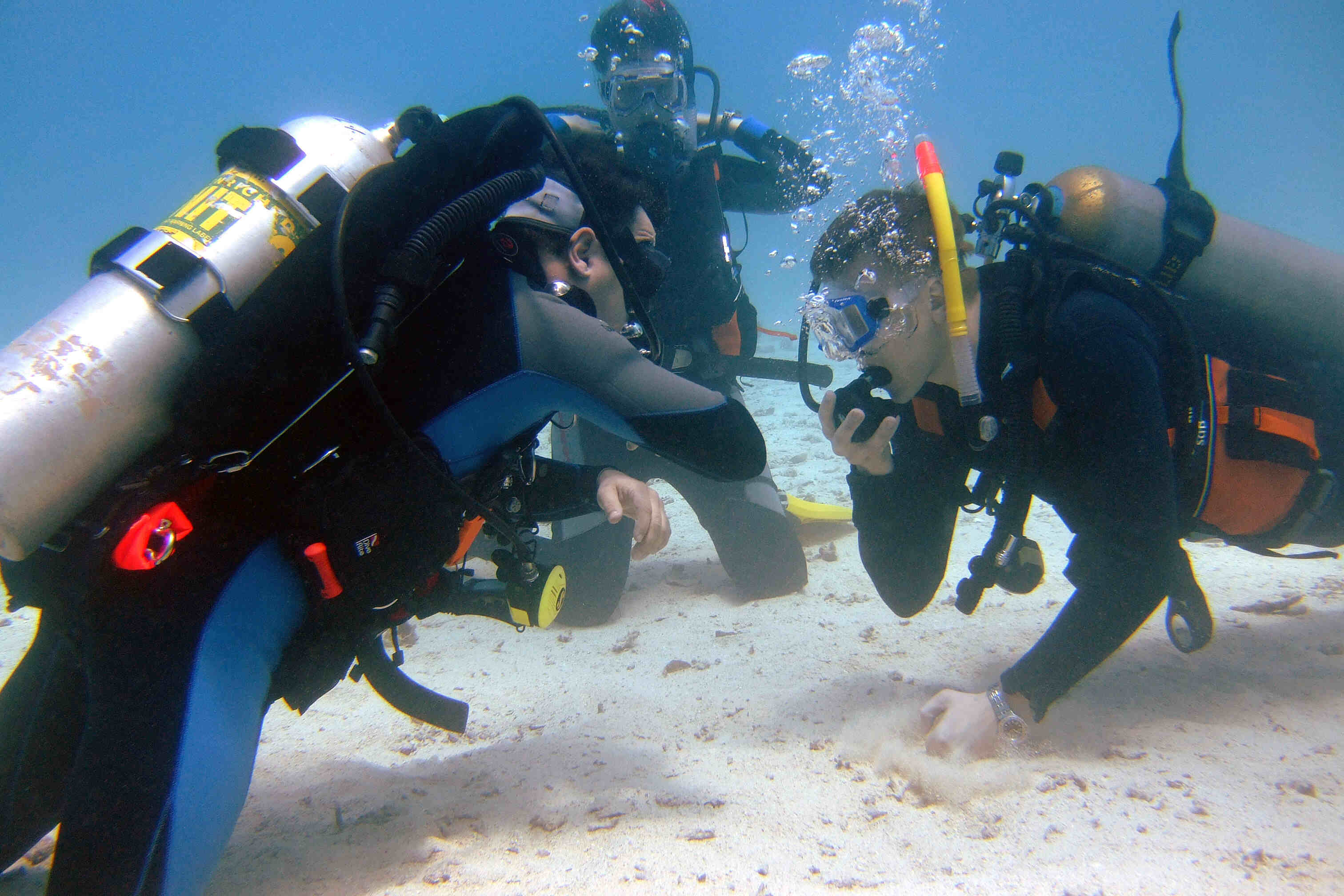
Underwater orienteering, a captivating and challenging sport, combines the thrill of underwater exploration with the strategic skills of orienteering. As enthusiasts navigate through submerged courses, they must rely on their ability to read underwater maps, maintain buoyancy, and make quick decisions. This unique sport demands a blend of physical prowess, mental acuity, and a deep understanding of underwater environments.
In this article, we will delve into 12 fascinating facts about underwater orienteering, shedding light on its history, techniques, and the remarkable individuals who have excelled in this exhilarating pursuit. From the origins of underwater orienteering to the essential equipment used by participants, we will uncover the intricacies of this enthralling sport. Whether you're a seasoned underwater orienteer or a curious newcomer, these insights will provide a comprehensive understanding of this extraordinary activity. So, let's dive in and explore the captivating world of underwater orienteering!
Key Takeaways:
- Underwater orienteering combines the thrill of exploration with strategic navigation, showcasing the beauty of underwater environments and fostering camaraderie among divers. It’s a unique sport that celebrates athleticism and environmental appreciation.
- Engaging in underwater orienteering demands exceptional navigation skills, physical and mental agility, and promotes environmental awareness. It offers a platform for adventure and lifelong learning, uniting individuals in their shared reverence for the natural world.
Underwater Orienteering is a Unique Sport
Underwater orienteering is a captivating and challenging sport that combines the thrill of underwater exploration with the strategic skills of orienteering. Participants navigate through a submerged course using a map and compass, testing their ability to find specific points in the underwater terrain. This exhilarating activity requires a blend of physical fitness, mental acuity, and a love for the underwater world.
It Originated in the Soviet Union
Underwater orienteering, also known as underwater navigation, originated in the Soviet Union in the 1960s. It was initially developed as a training exercise for military divers, emphasizing the importance of precise navigation in underwater conditions. Over time, it evolved into a competitive sport, attracting enthusiasts from around the globe.
The Equipment Includes Specialized Gear
Competitors in underwater orienteering rely on specialized equipment, including diving masks, fins, snorkels, and underwater compasses. The use of underwater compasses is crucial for maintaining direction and locating specific points within the course. Additionally, participants often utilize waterproof maps to aid in their navigation through the underwater terrain.
It Demands Exceptional Navigation Skills
Underwater orienteering demands exceptional navigation skills, as participants must interpret underwater maps, maintain a sense of direction, and adapt to the unique challenges of underwater visibility. The sport requires a keen understanding of underwater topography and the ability to make quick, accurate decisions while submerged.
It Showcases the Beauty of Underwater Environments
Participating in underwater orienteering offers a unique opportunity to explore the mesmerizing beauty of underwater environments. From vibrant marine life to captivating geological formations, the sport provides a platform for divers to immerse themselves in the wonders of the underwater world while honing their navigational abilities.
It Fosters Camaraderie Among Divers
Underwater orienteering events foster camaraderie among divers, creating a supportive and inclusive community of individuals who share a passion for underwater exploration and navigation. Participants often form strong bonds as they navigate the challenges of the sport together, forging lasting friendships based on their mutual love for the underwater realm.
It Requires Physical and Mental Agility
Engaging in underwater orienteering necessitates a combination of physical and mental agility. Participants must possess strong swimming skills, endurance, and the ability to remain calm and focused in underwater environments. The sport provides a holistic workout, challenging both the body and the mind.
It Offers Diverse Competition Formats
Underwater orienteering competitions feature diverse formats, including individual and team events. These formats cater to a range of preferences and allow participants to showcase their navigational prowess either independently or as part of a cohesive team, adding an element of versatility to the sport.
It Promotes Environmental Awareness
Underwater orienteering promotes environmental awareness and conservation efforts, as participants develop a deeper appreciation for the delicate balance of underwater ecosystems. Through their immersive experiences in underwater environments, divers often become advocates for marine conservation, contributing to the protection of these vital ecosystems.
It Provides a Platform for Adventure
Participating in underwater orienteering offers a platform for adventure and exploration, allowing individuals to embark on thrilling underwater journeys while honing their navigational skills. The sport appeals to those with a sense of adventure and a desire to delve into the mysteries of the underwater world.
It Encourages Lifelong Learning
Engaging in underwater orienteering encourages lifelong learning, as participants continually refine their navigational abilities and expand their understanding of underwater geography. The sport presents an ongoing opportunity for personal growth and skill development in a dynamic and ever-changing aquatic environment.
It Celebrates the Intersection of Sport and Nature
Underwater orienteering celebrates the intersection of sport and nature, highlighting the harmonious relationship between human athleticism and the captivating underwater world. It serves as a testament to the boundless possibilities for exploration and discovery that exist beneath the ocean's surface, uniting individuals in their shared reverence for the natural world.
In conclusion, underwater orienteering stands as a testament to the remarkable fusion of athleticism, exploration, and environmental appreciation, offering a one-of-a-kind experience that captivates the hearts and minds of participants worldwide.
Conclusion
In conclusion, underwater orienteering is a captivating and challenging sport that combines navigation skills with physical prowess. It offers a unique opportunity to explore the underwater world while honing one's ability to navigate in a dynamic and often unpredictable environment. Whether you're a seasoned diver or a newcomer to the sport, underwater orienteering provides a thrilling way to test your limits and immerse yourself in the beauty of the ocean. With its blend of adventure, strategy, and teamwork, this sport continues to attract enthusiasts from around the globe, fostering a deep appreciation for the marine environment and the skills required to navigate it effectively. As interest in underwater orienteering grows, so too does the opportunity to engage with this exhilarating activity and experience the wonders that lie beneath the waves.
FAQs
Q: What equipment is needed for underwater orienteering?
A: Participants in underwater orienteering typically require basic diving gear, including a mask, fins, snorkel, and a dive computer or depth gauge. Additionally, a compass and underwater slate are essential for navigation and recording checkpoints.
Q: Is underwater orienteering suitable for beginners?
A: While some experience in diving is beneficial, many underwater orienteering events offer categories tailored to beginners. These categories often provide a supportive environment for newcomers to develop their skills and confidence in underwater navigation.
Was this page helpful?
Our commitment to delivering trustworthy and engaging content is at the heart of what we do. Each fact on our site is contributed by real users like you, bringing a wealth of diverse insights and information. To ensure the highest standards of accuracy and reliability, our dedicated editors meticulously review each submission. This process guarantees that the facts we share are not only fascinating but also credible. Trust in our commitment to quality and authenticity as you explore and learn with us.


